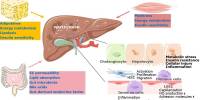The good news is that diabetes can be delayed by taking preventive measures and controlling weight, cholesterol, blood pressure, and blood glucose levels can help prevent complications once diabetes is present. Proper diet and exercise appear to be the answer to many common health issues, including high blood pressure and cholesterol, heart disease, stroke, and obesity.
According to a new study of data from the National Institutes of Health’s All of Us Research Program published in the Endocrine Society’s Journal of Clinical Endocrinology & Metabolism, wearable fitness devices provide new insights into the relationship between physical activity and type 2 diabetes.
Type 2 diabetes is the most common form of the disease, affecting 90% to 95% of people with diabetes. In type 2 diabetes, the body is resistant to the action of insulin, meaning it cannot use insulin properly, so it cannot carry sugar into the cells. Type 2 diabetes most often develops in people over age 45, but more and more children, teens, and young adults are being diagnosed.
We investigated the relationship between physical activity and type 2 diabetes with an innovative approach using data from wearable devices linked to electronic health records in a real-world population.
Andrew S. Perry
“We investigated the relationship between physical activity and type 2 diabetes with an innovative approach using data from wearable devices linked to electronic health records in a real-world population,” said Andrew S. Perry, M.D., of Vanderbilt University Medical Center in Nashville, Tenn. “We found that people who spent more time in any type of physical activity had a lower risk of developing type 2 diabetes. Our data shows the importance of moving your body every day to lower your risk of diabetes.”
The researchers analyzed Fitbit data and type 2 diabetes rates from 5,677 participants included in the NIH’s All of Us Research Program between 2010-2021. All of Us is part of an effort to advance individualized health care by enrolling one million or more participants to contribute their health data over many years. About 75% of the participants that the researchers studied were female.

They found 97 new cases of diabetes over a follow-up of 4 years in the data set. People with an average daily step count of 10,700 were 44% less likely to develop type 2 diabetes than those with 6,000 steps.
“We hope to study more diverse populations in future studies to confirm the generalizability of these findings,” Perry said.
In fact, health experts recommend proper diet and exercise to reduce the risk of type 2 diabetes, a condition that is also affecting an increasing number of adolescents who are substituting computer games for outdoor activities and carrots and yogurt for chips, cookies, and soda.
The National Institutes of Health conducted a groundbreaking study that demonstrated that diet and exercise can delay diabetes. A half-hour of walking or other low-intensity exercises per day, combined with a low-fat diet, reduced the risk of developing type 2 diabetes by 58%, according to the clinical trial.
















